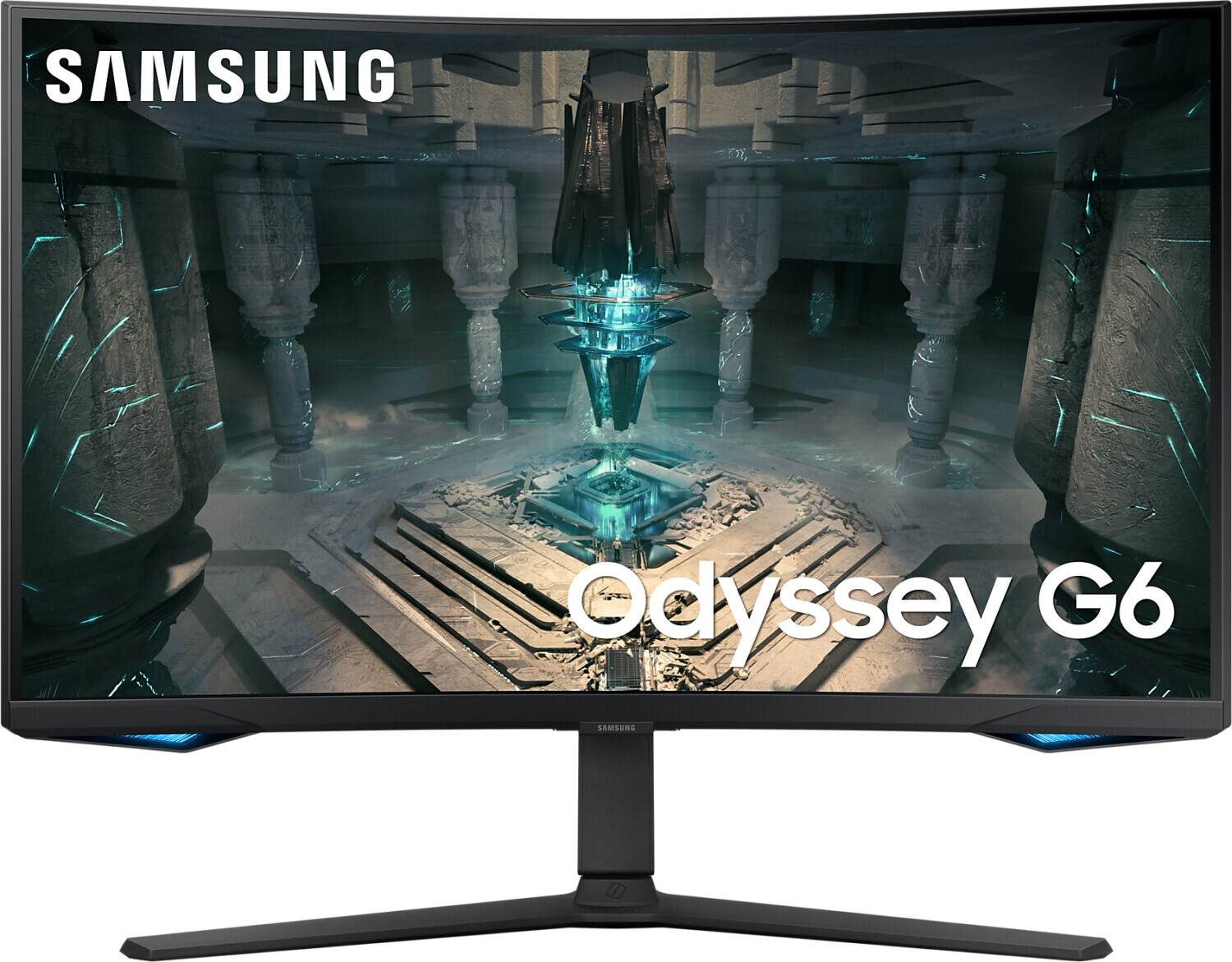



























£380.99*
- Resolution 2560 x 1440 QHD / WQHD
- Diagonal 32"
- Panel type VA
- Refresh Rate 240Hz



Product information
QHD resolution
With 1.7 times the pixel density of Full HD, QHD resolution delivers detailed and crisp images. Look forward to a clear view with plenty of space to dive deep into the action.
Experience the following highlights:
- QHD resolution (2560x1440) with 240Hz refresh rate and 1ms response time
- Smart Gaming Monitor: Instant access to the best streaming services and console games (XBOX App)
- Airplay 2 and Apple TV+ App
- Curved screen with 1000R
- QHD and Display HDR600 provide a crystal clear picture with the best contrast
- AMD FreeSync Premium Pro
- HDMI 2.1 ports, DP port connectors, Wifi and Bluetooth built-in
The graphics boost
QHD resolution
With 1.7 times the pixel density of Full HD, QHD resolution offers detailed and crisp images. Enjoy a clear view with plenty of space to dive deep into the action.
Even the smallest details come to the fore
DisplayHDR 600
Even in dark scenes, details are clear and visible. DisplayHDR 600 provides plenty of contrast, deep blacks and bright whites so you can see your opponents clearly and find even hidden objects in the dark.
React in real time
240 Hz refresh rate & 1ms response time
Conquer your opponents even at top speeds. The 240 Hz refresh rate eliminates lag for breathtaking gameplay and absolutely smooth action scene after scene. With a 1ms response time and smooth images, you'll be one step ahead of your opponents.
Don't let your guard down
FreeSync Premium Pro
AMD FreeSync Premium Pro keeps the GPU and panel in sync to eliminate judder, screen lag and image tearing. Fast action and complex gaming scenes are stable and smooth, so you can react quickly.
Samsung Gaming Hub
The Gaming Hub gives you instant access to the best cloud gaming services, your favourite consoles and PCs. Enjoy smooth graphics and responsive gameplay through Samsung's advanced game streaming technology with no downloads or memory limits - just turn it on and start playing.
Your favourite shows in one place
Smart TV experience
When you want to take a break from the gaming marathon, you can also enjoy the latest streaming content in sharp quad-high definition. All you need is a simple Wi-Fi connection. Samsung TV Plus gives you free live content with no downloads or logins, plus personalised content recommendations from Universal Guide.
A game of the senses
1000R curvature
Let the atmosphere envelop you and experience a thrillingly realistic gaming experience: 1000R curvature fills your peripheral field of vision, putting you directly in your character's view.
Designed to light up your world
Integrated lighting with CoreSync
Engage with impressive lighting in every scene. Core lighting lets you add a personal touch to your setup with multiple colour modes that almost jump from the screen into your reality. With CoreSync technology that matches the screen to the colours of your game, you can feel like you're immersed in your gaming world.
Quickly set up
Game Bar
Check and adjust game settings on the fly. Now you can easily view the status of key settings such as FPS or HDR and change the response time or screen ratio and game mode without leaving your game.
Expand your field of view
Ultrawide Game View
Keep your eye on victory. Set your screen to 21:9 to discover hidden areas in game scenes with Ultrawide Game View. This way you can get another step closer to the leaderboard.
Quickly connected
Auto Source Switch Plus
Directly into the game: you no longer have to reconnect your cables in a complicated way. With Automatic Source Switch Plus, your monitor can recognise newly connected devices the first time they are plugged in. So you no longer have to search for the correct input source.
Technical data
| Name | Samsung S32BG650EU 32" VA Monitor, 2560 x 1440 QHD / WQHD, 240Hz, 1ms |
|---|---|
| Article number | 1000025617 |
| GTIN/EAN | 8806094192711 |
| Manufacturer SKU | LS32BG650EUXEN |
| EPREL ID | 1318290 |
| Model name | S32BG650EU |
| Brand | Samsung |
| Product Type | Monitor |
| Product Series | Samsung Odyssey Series |
| Technology | LCD |
| Panel type | VA |
| Resolution | 2560 x 1440 QHD / WQHD |
| Diagonal | 32" |
| Aspect Ratio | 16:9 |
| Viewing angle - Horizontal | 178° |
| Viewing angle - Vertical | 178° |
| Contrast Ratio | 2,500 :1 |
| Max. Brightness | 350 cd/m² |
| Response time | 1ms |
| Refresh Rate | 240Hz |
| Support - VESA | 100 x 100 |
| Inputs | 1x Displayport , 2x HDMI , 5x USB-A |
| Features | AMD FreeSync , Curved , Flicker Free , Integrated speaker |
| Product width | 71.3 cm |
| Product height | 43.97 cm |
| Product depth | 18.15 cm |
| Weight | 5.5 kg |
| Colour | Black |
| EEK Spectrum | A to G |
| Energy efficency class | F |
| Delivery contents | DisplayPort Cable , HDMI Cable , Power cable |
| Condition | New |
| Warranty | 36 Month |
| Warranty type | Bringin service Service and support information |
Downloads
Product safety
| Person responsible for the EU |
|---|
| Samsung Electronics GmbH |
| Am Kronberger Hang 6 |
| 65824 Schwalbach |
| Germany |
| sseg.comm@samsung.com |



